By: Stacey Viera
Halloween recently ended, which means the retail world is jumping right into celebrating Christmas. (Or marketing Christmas, depending on how you look at it.) And what is more American than supporting our economy by purchasing Christmas gifts? If we’re to believe our friends who make the TV ads this holiday season, it’s never too early to think about giving! So what will you be giving in 2011? 2012?
Those are odd questions, indeed, made less odd when I explain my point of view.
A couple of weeks ago, I visited Vint Hill Craft Winery, out yonder in Loudon Fauquier County, Virginia. Yonder ain’t even that far away – just an hour from the city. And it was at Vint Hill that I received an education in winemaking from the enologist – a fancypants word for winemaker – DJ Leffin.
There’s no vineyard at Vint Hill, it’s strictly a production facility and tasting room. Vintners – which could be anyone who chooses to create a barrel with Vint Hill – pick grapes from California, Washington State or Virginia based on individual flavor preferences. Leffin then teaches each vintner to make the barrel of wine, which yields 300 bottles, over the course of anywhere from six months to two years, depending on the wine. Vint Hill is one of just two craft wineries in the country. For the cost of roughly $20 per bottle, wouldn’t that be a lovely holiday gift next year for employees, friends or clients? (Oh, and if I am your employee, friend or client, I prefer merlot, FYI.)
In need of an education about winemaking beyond “Is this a carmenere? I like carmenere. It tastes good,” DJ walked me around the warehouse-style building with his sidekick, Lambeau the Labrador at his side, and demonstrated the step-by-step process by which his clients make their own barrels of wine.
- The fruit arrives in 25-pound bins. The day I was at Vint Hill, a Napa Valley cabernet was set to be delivered.
- The grapes go to a vibrating table for sorting. The table spreads the fruit and sorts the good grapes from what Leffin called “raisin berries,” sticks, leaves and other detritus.
- The “keeper” grapes go up a conveyor to the de-stemmer, which rips the grapes from the stems. This machine can de-stem at the rate of one ton per hour. Stems that are brown and ripe can add texture, but green stems are removed during a second sorting. It is unusual for wineries to have a second sorting process, Leffin noted, but this is incredibly important for quality. He said that some local farmers use the stems for composting, helping reduce waste from the winery.
- At this stage, the process can go one of two ways, depending on whether you’re making red or white wine. For whites, bins of sorted, twice de-stemmed grapes are dumped into a wine press. While I had visions of Lucille Ball stomping grapes, the process is more delicate – and high-tech – than that. A bladder inside the barrel inflates to press the grapes, squeezing out the juice. As for red wine, the grapes stay in the bins to ferment. It is the pigment from the skin that bleeds into the fruit – making it red, aha! – before processing.
- Next, the white wines go to a stainless-steel tank or a barrel to ferment. Some stay in the stainless steel, depending on the style, such as Riesling, viognier or sauvignon blanc. Red wines to go the tank for 24 to 48 hours, where the sediment separates, and then the wine is moved to the barrel.
- Ah, the barrel room, where the magic of the aging process happens! The room we visited has capacity for 108 barrels at any time, and depending on the type of wine, some barrels stay for six months, while others will age for two years, such as a California cabernet that Leffin had at the moment. Poking out of the top of each barrel, I noticed an odd glass contraption. That’s an air lock or fermentation lock. Carbon dioxide and alcohol are byproducts of fermentation. Alcohol = good! Carbon dioxide = bad. The air lock releases the undesirable CO2 and leaves the wine to age in the barrels made of oak or acacia, a type of wood that lends itself to create more floral aromas, best used when aging fruity, aromatic whites, according to Leffin. The wine is monitored in the barrels. It’s smelled and tasted on a weekly basis, and as tiny amounts of wine evaporate, spoilage can occur if not monitored. Less than 1 percent of each barrel is topped off with excess wine, but that 1 percent could mean the difference between wine and vinegar, Leffin said. At this important stage, yeasts are also added to complement flavor profiles. Yeast consumes sugars to create desired byproducts, such as aroma, flavor characteristics or mouthfeel.
- Prior to bottling, certain whites go through a “fining” process wherein a protein that otherwise gives the wine a cloudy appearance is removed. While some people will swear that a cloudy wine tastes different from one that hasn’t gone through the fining process, Leffin said it is mainly done to “improve the visual appeal” of the wine.
- After spending many months in a tank or barrel, white wines – whether “fined” or not – are filtered to remove bacteria and then go to the bottle. Reds go to a secondary fermentation process, and some go through a coarse filter. A sterile filtration process reduces the likelihood of contamination, which is one of the winemaker’s biggest concerns. “Eighty percent of this process is cleaning,” Leffin said emphatically. A steamer sterilizes the bottling line and hoses are repeatedly cleaned.
- Bottling is the final stage at the winery before the bottles go to their owners. Whites are typically bottled within six to 12 months of beginning the winemaking process, and big, bold reds are usually bottled around 12 to 24 months. Each vintner gets to make his own label for his barrel, but because it’s an alcoholic product, Federal authorities must approve the label copy and design, which can sometimes take months.
- When Leffin mentioned bottle shock, I’m glad I didn’t claim to know anything about “that movie my husband added to our Netflix queue,” because bottle shock is an actual winemaking term. Following the “bottle shock” period – the off flavoring that occurs when the wine is “shocked” from being moved from barrel to bottle – whites can be enjoyed immediately and reds should be allowed to age for at least one year.
For someone who knew very little about making wine before visiting Vint Hill, I found the entire experience enlightening and could only imaging how exciting a hands-on process of making a custom barrel would be for people who are aficionados.
Leffin himself is personable, low-key and a science wonk to the core. A former high school science teacher, Leffin and his wife moved to Virginia with the Army. On weekends, they would travel from winery to winery and found that Pearmund Cellars was a favorite. Leffin soon became a vineyard volunteer and later a full-time winemaker following an apprenticeship with chief winemaker Chris Pearmund. Leffin, who has a master’s degree in viticulture and enology, was a shoo-in as winemaker at Vint Hill when it was founded by Pearmund in 2009.
In the tasting loft that overlooks the winery, people who are into wine can compare varietals at a tasting bar that features several flights, and sometimes 20 bottles at a time. Some wines at the tasting bar are private-label varieties that vintners sell back to Vint Hill. Classes, parties and private events are also offered. And if you really want to get your hands dirty, call ahead to see if you can volunteer to de-stem a batch of grapes. But be aware: preference for such duties are given to the vintners who pay for the unique experience.
Before I left Leffin and Lambeau the Labrador to their work, we chatted a bit about this year’s wine grape harvest in Virginia. A hot, dry summer brought an early harvest, which means “better quality, but less quantity,” Leffin said. “Vintage 2010 has the potential to be one of the best vintages that Virginia has ever seen.”
Want to get in on the action? Visit Vint Hill’s tasting bar on Fridays, Saturdays or Sundays from 11 a.m. to 5 p.m. and learn about how you could become a vintner with your very own private label wine!

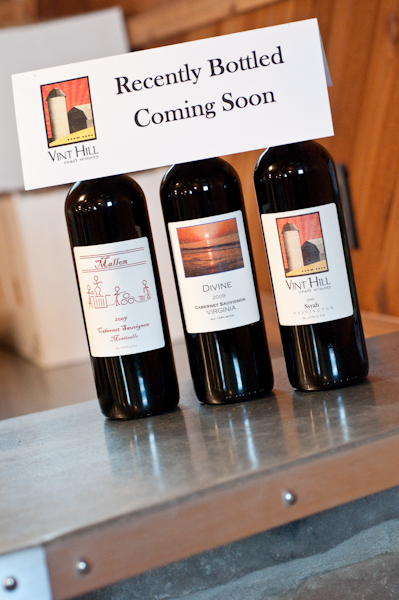
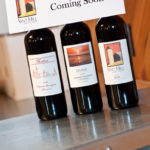

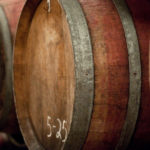

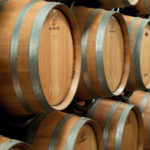

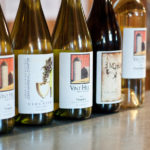




[…] This post was mentioned on Twitter by Stacey Viera, Stacey Viera. Stacey Viera said: What's a "craft winery?" Well, I'm glad you asked! http://bit.ly/bdUNgb #vinthill #virginia cc: @intuitivefare […]
Gorgeous photographs, as always, Stacey. And I learned something new: bottle shock. I’ve never heard that term, but it makes me think the wine is going through PTSD!